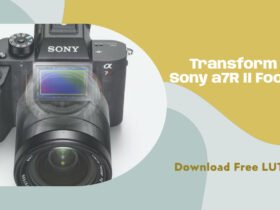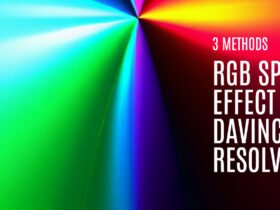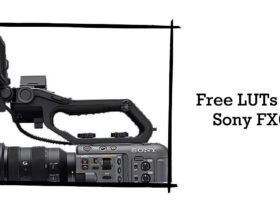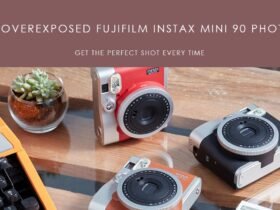If you’re enamored by the sleek design and powerful features of the Nikon Z50, but are interested in exploring alternatives that might better suit your unique needs, you’ve come to the right place.
The Nikon Z50 is a DX-format mirrorless digital camera that boasts an impressive list of features. From a 20.9MP CMOS sensor and an EXPEED 6 image processor for fast performance, a 209-point hybrid AF system with eye detection for precise focusing, to UHD 4K video recording and a host of creative controls for personalized imagery, the Z50 seems to have it all.
Moreover, the camera’s body is compact yet ergonomically designed for all-day shooting comfort, along with a 2.36m-dot OLED EVF and a 3.2″ rear touchscreen LCD for versatile viewing and operation. The weather-sealed, magnesium alloy body ensures durability, while built-in Wi-Fi and Bluetooth facilitate easy photo and video sharing through the Nikon SnapBridge app.
However, the vast universe of photography equipment holds several alternative cameras that could rival the Nikon Z50, offering different advantages that might align better with your specific requirements.
So, let’s delve into the top 5 alternatives to the Nikon Z50, taking a look at what they offer, how they compare, and why they might be just the camera you’re looking for.
1. Canon EOS M50 Mark II
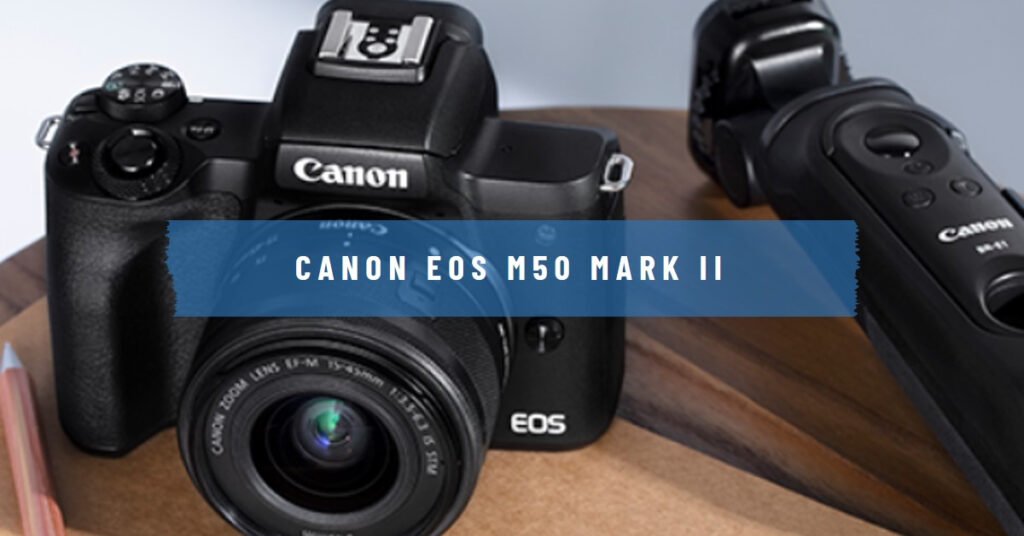
In the world of mirrorless digital cameras, finding an option that suits both your budget and your specific photographic needs can be a challenging task. Two names frequently mentioned in this context are the Nikon Z50 and the Canon EOS M50 Mark II. While both cameras come with unique advantages, the Canon EOS M50 Mark II stands as a strong alternative to the Nikon Z50 for several reasons.
1. Sensor – Full Frame or APSC
Both the Canon EOS M50 Mark II and Nikon Z50 feature APS-C CMOS sensors. The Nikon Z50’s sensor resolution is slightly lower at 20.9 megapixels compared to the Canon EOS M50 Mark II’s 24.1 megapixels. The larger resolution can provide more detailed images, especially in large prints or heavy cropping scenarios, making the Canon EOS M50 Mark II a favorable choice.
2. Autofocus
The autofocus capability is an important aspect to consider when comparing cameras. The Nikon Z50 uses a phase-detection autofocus system with 209 points, while the Canon EOS M50 Mark II uses a dual-pixel CMOS AF system, which employs phase-detection with 99 points and contrast detection with 143 points. This dual system can give the Canon M50 Mark II a slight edge in different lighting conditions.
3. Speed
In terms of shooting speed, the Nikon Z50 provides a continuous shooting speed of up to 11fps at 20.9 MP. On the other hand, the Canon EOS M50 Mark II offers a maximum continuous shooting speed of up to 10 fps at 24.2 MP. Although the Nikon Z50 is slightly faster, the Canon M50 Mark II’s higher resolution could mean more detail in fast-paced sequences.
4. Design – Dimension and Weight Comparison
When it comes to portability, both cameras are similarly sized, but the Canon EOS M50 Mark II is slightly lighter at 387g compared to the Nikon Z50’s 395g. This can make a noticeable difference during extended shooting sessions or when traveling.
5. Viewfinder and LCD monitor
Both cameras provide an OLED electronic viewfinder with a resolution of 2.36 million dots, giving you a bright, clear, and detailed view of your frame. The Nikon Z50 features a slightly larger viewfinder size (0.39″ vs Canon’s 0.36″) but the difference is not substantial enough to be a decisive factor.
The Canon EOS M50 Mark II, however, stands out with its fully articulating touchscreen LCD, which provides flexibility for shooting from different angles and is particularly handy for vlogging and selfies. The LCD on the Nikon Z50 is also a touchscreen but it only tilts 180°, which may limit its usability in some shooting conditions.
6. Battery life
The Nikon Z50 surpasses the Canon EOS M50 Mark II when it comes to battery life, providing about 300 shots per charge as compared to Canon’s 235 shots. This can be a significant factor for those planning to use the camera for extended periods without access to charging facilities. However, for most casual users or short video shoots, both cameras should offer satisfactory battery performance.
7. Video Capabilities
While both cameras can shoot in 4K UHD resolution, Canon’s EOS M50 Mark II records 4K video with a 1.6x crop factor, which might not be ideal for wide-angle shots. However, the camera does support digital image stabilization for video, which can be handy for handheld shooting.
The Nikon Z50 doesn’t have a crop factor in 4K, which allows for better wide-angle videography. But, it only offers digital image stabilization for video, a factor to consider if you shoot video handheld frequently.
8. Lens Mount and Availability
When it comes to lens mounts, the Nikon Z50 uses the Nikon Z mount, while the Canon EOS M50 Mark II uses the Canon EF-M mount. Canon’s EF-M lens lineup isn’t as extensive as the EF and EF-S series, but it is growing and does cover most focal lengths needed for general photography.
On the other hand, the Nikon Z mount is newer and while the number of native lenses is growing, Nikon had fewer native Z mount lenses than Canon had EF-M lenses. However, both cameras support their respective brands’ DSLR lenses through mount adapters.
9. Price
Pricing often plays a decisive role in choosing a camera. The Canon EOS M50 Mark II comes in at a lower price point, being priced at around $599, while the Nikon Z50 is slightly more expensive at around $750. If budget is a consideration, the Canon camera provides a more affordable alternative.
The Canon EOS M50 Mark II is a compelling alternative for the Nikon Z50. While the Nikon Z50 leads in some areas like battery life, and sensor resolution, the Canon EOS M50 Mark II offers comparable features at a more affordable price. The choice between the two will depend on your specific needs and budget.
2. Nikon Z5
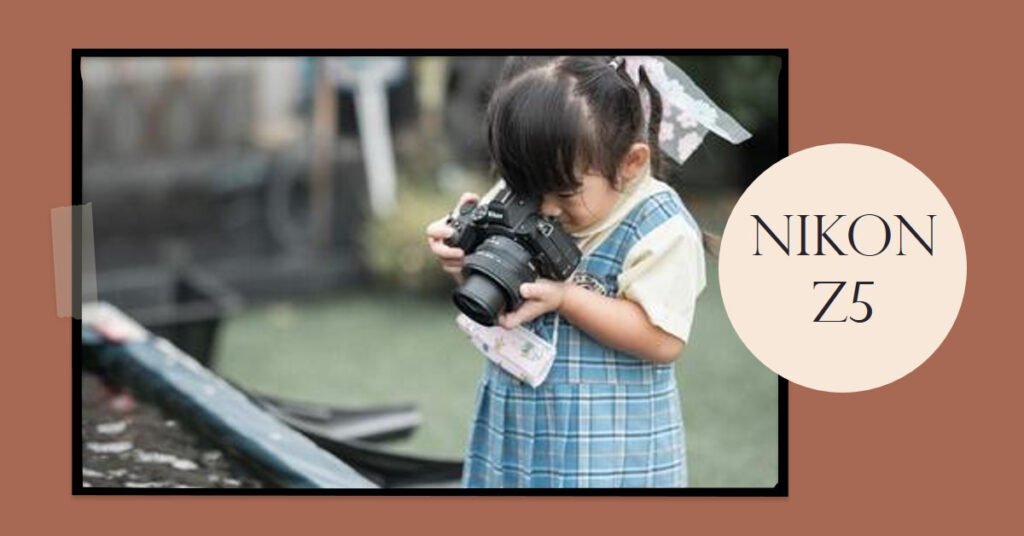
The Nikon Z5 and Z50 are two prominent models in Nikon’s mirrorless camera lineup. While they share certain similarities, they also exhibit unique strengths and attributes, which may make one a more favorable choice over the other depending on your photographic requirements. If you’re contemplating whether the Nikon Z5 could serve as a good alternative for the Nikon Z50, this comprehensive comparison will help you discern the important differences and similarities between these two models.
1. Sensor: Full frame vs APS-C
Both the Nikon Z5 and Z50 are proficient at capturing detailed and vibrant images. However, they employ different sensor sizes which directly impact their performance. The Z50 features an APS-C sensor with an effective resolution of 20.9 megapixels. This crop sensor provides excellent image quality and is quite sufficient for general photography, including landscapes and portraits.
The Z5, on the other hand, steps up with a full-frame sensor that offers an effective resolution of 24.3 megapixels. The larger sensor size grants superior low-light performance, greater dynamic range, and better overall image quality. Thus, if you are considering professional photography or often find yourself shooting in challenging lighting conditions, the Nikon Z5 stands as a compelling alternative to the Z50.
2. Autofocus
The Z50 and Z5 both utilize Nikon’s powerful hybrid autofocus system. The Z50 employs 209 phase-detection points covering nearly the entire frame, while the Z5 takes it up a notch with 273 phase-detection points, offering more precision and better tracking of subjects. Both cameras perform impressively in terms of focus speed and accuracy. The Z5’s slightly enhanced AF system may be an advantage for complex shooting scenarios or fast-moving subjects.
3. Speed
In terms of shooting speed, the Z50 pulls ahead with an impressive continuous shooting rate of up to 11 frames per second, compared to the Z5’s 4.5 frames per second. This faster burst rate can prove valuable for action or wildlife photography where capturing the decisive moment is paramount.
4. Design: Dimension and Weight Comparison
Despite housing a full-frame sensor, the Z5’s size and weight are not significantly higher than the Z50. The Z50 weighs in at approximately 395g and has dimensions of 126.5 x 93.5 x 60 mm. The Z5, on the other hand, weighs around 590g and measures 134 x 100.5 x 69.5 mm. While the Z50 is more compact and lightweight, the Z5 maintains a reasonable form factor considering its larger sensor and added features.
5. Viewfinder and LCD monitor
The Z5 and Z50 both feature OLED electronic viewfinders and tilting touchscreens. However, the Z5 offers a higher resolution viewfinder (3.69 million dots) compared to the Z50’s 2.36 million dots, providing a more detailed and crisp view of your scene. The LCD monitor on both cameras offer similar functionality and resolution.
6. Battery life
The Z5 excels in terms of battery life, delivering approximately 470 shots per charge, while the Z50 delivers around 300 shots. This extended battery performance can be vital for long shooting sessions or when traveling.
7. Video Capabilities
Both cameras offer 4K UHD video recording, but the Z5 gains a significant advantage with its in-camera 5-axis image stabilization, compared to the Z50’s digital stabilization. This feature can substantially improve the smoothness and clarity of handheld video footage.
8. Lens Mount and Availability
The Z5 and Z50 both utilize Nikon’s Z mount, offering compatibility with a growing range of Z-mount lenses. However, the full-frame Z5 can take full advantage of the quality and field of view provided by these lenses, while the APS-C Z50 will have a crop factor to consider.
9. Price
As expected, the Z5 comes at a higher price point, around $999, compared to the Z50’s more budget-friendly price of around $750. However, the Z5’s enhanced features and full-frame sensor arguably justify this cost difference.
The Nikon Z5 is indeed a promising alternative to the Nikon Z50. It offers superior image quality, improved autofocus performance, longer battery life, and enhanced video capabilities. The decision ultimately depends on your individual needs and budget, but for those willing to invest a little extra, the Z5 offers notable advantages.
3. Sony ZV-E10
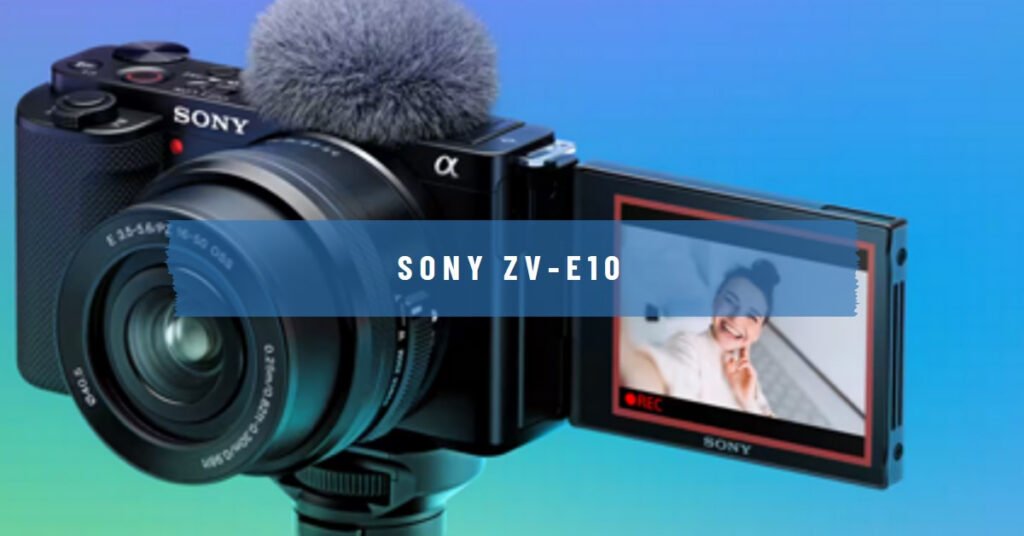
When it comes to choosing the right camera, the Nikon Z50 has been a popular choice for photographers worldwide. It offers a robust set of features suitable for both photography and videography. However, if you’re exploring alternatives, the Sony ZV-E10 proves itself to be a strong contender. Let’s examine how they compare across key areas:
1. Sensor – Full frame or APSC
Both the Nikon Z50 and the Sony ZV-E10 feature an APS-C sensor, but there’s a slight difference in resolution. The Z50’s sensor resolution is 20.9 megapixels, while the ZV-E10 comes with a slightly higher effective resolution of 24.2 megapixels. This might result in a bit more detail in the images captured by the Sony ZV-E10.
2. Autofocus
The Z50 offers 209 phase-detection autofocus points, whereas the ZV-E10 boasts an impressive 425 phase-detection and 425 contrast-detection autofocus points, providing a larger coverage area and potentially more accurate focus.
3. Speed
When it comes to speed, both cameras offer a burst shooting speed of up to 11 frames per second, sufficient for capturing high-speed action or sports photography.
4. Design – Dimension and Weight Comparison
In terms of design, the Sony ZV-E10 is smaller and lighter, weighing in at 343 grams, while the Nikon Z50 weighs slightly more at 395 grams. The smaller size and lighter weight of the ZV-E10 might be an advantage for those looking for a more compact and portable camera.
5. Viewfinder and LCD monitor
While both cameras come with a similar 3-inch LCD monitor, only the Nikon Z50 has a built-in electronic viewfinder. This feature might be crucial for photographers who prefer composing their shots using a viewfinder, especially in bright outdoor conditions where the LCD monitor might be difficult to see.
6. Battery life
In terms of battery life, the Nikon Z50 has an edge with approximately 300 shots per charge compared to the Sony ZV-E10’s 440 shots. For those who shoot extensively or travel often, this difference might be significant.
7. Video Capabilities
Both cameras can record 4K video, but the Sony ZV-E10 takes the lead in video capabilities, offering S-Log and HLG profiles, making it a more versatile option for serious videographers who want to do extensive post-processing.
8. Lens Mount and Availability
While the Z50 features the Nikon Z mount, the Sony ZV-E10 comes with the Sony E mount. Both companies have a broad lens lineup, but Sony’s E mount system has more lenses available in the market, giving users more options for creativity and flexibility.
9. Price
Regarding price, the Sony ZV-E10 is slightly cheaper at $699 compared to the Nikon Z50, which retails at $750. This cost-effectiveness combined with its robust features makes the Sony ZV-E10 a good alternative to the Nikon Z50.
While the Nikon Z50 is an impressive camera in its own right, the Sony ZV-E10 presents itself as a viable alternative, excelling in certain areas such as autofocus performance, resolution, and video capabilities. Ultimately, the choice will depend on individual shooting styles, preferences, and budget. But the Sony ZV-E10 stands out as a powerful contender worth considering.
4. Sony a6400

In the current world of digital photography, choosing the right camera can be quite challenging given the myriad of choices available. Two such models vying for photographers’ attention are the Nikon Z50 and the Sony A6400. Though both cameras deliver impressive performance and high-quality images, for those exploring the Nikon Z50, considering the Sony A6400 as an alternative provides an equally compelling proposition.
1. Sensor – Full frame or APSC
Both the Nikon Z50 and Sony A6400 feature an APS-C CMOS sensor, offering high image resolution and a similar crop factor of 1.5x. However, the Sony A6400 comes with a slightly higher resolution (24.2 MP) compared to the Nikon Z50’s 20.9 MP, which might offer a bit more detail in the photos.
2. Autofocus
In the field of autofocus, the Sony A6400 holds a slight advantage with its impressive hybrid autofocus system boasting 425 phase-detection and 425 contrast-detection points. Comparatively, Nikon Z50 provides 209 phase-detection points. This makes the Sony A6400 potentially faster and more accurate in locking onto subjects, especially moving ones, making it a good alternative for Nikon Z50.
3. Speed
The speed of both cameras is quite comparable. They both offer continuous shooting of up to 11 fps, providing excellent speed for capturing fast-paced action and candid moments.
4. Design – Dimension and Weight Comparison
In terms of design, both cameras are relatively compact and lightweight, with the Nikon Z50 weighing in at 395 g, and the Sony A6400 slightly heavier at 403 g. However, the size and weight differences are negligible and should not significantly impact the handling or portability of these cameras.
5. Viewfinder and LCD monitor
Both the Nikon Z50 and Sony A6400 feature a built-in electronic viewfinder and a tilting touchscreen LCD monitor, providing flexibility and convenience for various shooting angles. However, the Sony A6400’s screen can tilt up 180° for vlogging or selfies.
6. Battery life
Nikon Z50 holds a slight advantage in terms of battery life, offering around 300 shots per charge as compared to approximately 360 shots in the Sony A6400. However, battery life can depend heavily on usage patterns, so this may not always be a decisive factor.
7. Video Capabilities
Both cameras offer impressive video capabilities, with both capable of shooting 4K UHD video. However, the Sony A6400 also comes with added features like S-Log profiles and HDR (HLG), which can be beneficial for serious videographers.
8. Lens Mount and Availability
The Nikon Z50 uses the Nikon Z lens mount, which is newer and thus has fewer lenses available. On the other hand, the Sony A6400 uses the Sony E mount, which has a larger variety of lenses available. So for photographers seeking versatility and variety in lens options, the Sony A6400 may be a better alternative.
9. Price
Finally, cost-wise, the Nikon Z50 is priced at $750, while the Sony A6400 is slightly more expensive at $899. However, given its higher resolution, superior autofocus system, and extensive lens availability, the Sony A6400 provides excellent value for the price difference.
In conclusion, while the Nikon Z50 is a fantastic camera in its own right, the Sony A6400 proves to be a compelling alternative with its high-resolution sensor, superior autofocus system, and a larger selection of lenses. The choice ultimately boils down to specific requirements and personal preferences.
5. Nikon Z30

Nikon’s mirrorless range has been highly appreciated by photographers worldwide, and the Nikon Z50 has been a standout model with its excellent features and performance. However, the Nikon Z30, the younger sibling in the Z series, emerges as an appealing alternative to the Z50, offering similar quality and functionality at a more budget-friendly price point. This discussion explores why the Nikon Z30 can be considered a good alternative for the Nikon Z50.
1. Sensor – Full frame or APSC
The Nikon Z50 and Z30 both have an APS-C CMOS sensor. Although their effective megapixel count is almost identical (20.9 MP for Z50 and 20.8 MP for Z30), the image quality produced by both cameras is expected to be virtually indistinguishable. This similarity in sensor size and resolution ensures that the Nikon Z30 offers the same high-quality imaging experience as the Z50, making it a compelling alternative.
2. Autofocus
When it comes to autofocus, both cameras use a 209-point phase-detection system. This focus system allows for precise and quick autofocus, especially beneficial in tracking moving subjects and shooting in continuous mode. The similarity in autofocus systems guarantees that the Nikon Z30 users will not miss out on any autofocus capabilities provided by the Nikon Z50.
3. Speed
Both the Nikon Z50 and the Z30 offer the same continuous shooting speed – up to 11 fps. This feature is vital for capturing fast-paced action, ensuring you won’t miss the critical moment in sports or wildlife photography. The Nikon Z30 matches the speed of the Z50, making it a viable alternative for those needing rapid-fire shooting.
4. Design – Dimension and Weight Comparison
The Nikon Z30, weighing in at 350g, is lighter than the Nikon Z50, which weighs 395g. While both cameras are compact and easily portable, the Z30’s lower weight might offer slightly more convenience for photographers who value light gear, especially when travelling or shooting for extended periods.
5. Viewfinder and LCD monitor
One significant difference between the two cameras is the absence of a built-in electronic viewfinder on the Nikon Z30, which the Z50 features. However, the Z30 compensates with an articulating touchscreen LCD monitor, enhancing its utility for vlogging and selfies. Thus, if you heavily rely on the LCD monitor and often shoot in Live View mode, the Nikon Z30 may indeed prove to be a good alternative.
6. Battery life
The Nikon Z30 outperforms the Z50 in battery life, offering around 330 shots per charge compared to the Z50’s 300. Although this difference might seem minimal, the extended battery life could be crucial for shooting in situations where charging or swapping batteries frequently is not an option.
7. Video Capabilities
In terms of video capabilities, both cameras offer UHD 4K video recording. However, the Nikon Z30 supports IP streaming, a feature absent in the Z50. This feature could be particularly beneficial for live streamers and vloggers.
8. Lens Mount and Availability
Both the Nikon Z50 and the Nikon Z30 use the Nikon Z lens mount, which means both cameras have access to the same range of high-quality Z-mount lenses. The shared lens mount ensures that the Nikon Z30 users have the same lens options as those using the Z50.
9. Price
One of the significant advantages of the Nikon Z30 over the Z50 is its lower price. Priced at $600, the Nikon Z30 is $150 less than the Nikon Z50, making it a more affordable alternative, especially for those on a tighter budget.
In conclusion, while the Nikon Z50 continues to be an exceptional mirrorless APS-C camera, the Nikon Z30, with its similar performance and features at a lower price, offers an attractive alternative for photographers who don’t require an electronic viewfinder. The Z30 represents a solid balance between price and performance, underscoring why it can be a good alternative for the Nikon Z50.
In the world of cameras, the Nikon Z50 undoubtedly holds a prominent place with its impressive image quality, robust autofocus, and versatile video capabilities. However, as we’ve explored in this article, there’s a variety of viable Nikon Z50 alternatives that could also meet your photography needs.
From the Nikon Z30, which offers similar features at a more affordable price, to other camera brands that present their unique strengths, these alternatives provide a plethora of options for different photography styles and budgets. It’s essential to consider the specific requirements of your photography or videography work to find the best match.
When you’re armed with the right knowledge about what you need and what each camera can offer, making an informed decision becomes significantly easier. We hope that this guide has provided valuable insights to help you choose your ideal camera.
- Also Read: Top 5 Nikon Z6 II Alternatives
- Also Read: Top 5 Nikon Z7 II Alternatives
- Also Read: How To Create Rain Effect In Davinci Resolve




